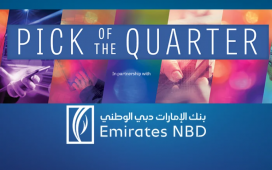Jigar Sagar, Founder, Triliv Holdings on the rising potential of affiliate marketing in the GCC region.
What if your customers didn’t just buy from you, but actively helped you grow your business? This is the promise of affiliate marketing, a strategy transforming how businesses in the UAE engage with their audiences.
With e-commerce sales in the region projected to surpass $27bn by 2025 and social media penetration exceeding 99 per cent, the UAE offers an ideal environment for affiliate marketing to thrive.
From companies within the luxury goods and travel sector to those active within the health tech and wellness
To continue reading this article you need to be registered with Campaign. Registration is free and only takes a minute. Register Now or sign in below if you already have an account.
Tags:affiliate marketingArbic languagebloggersConsumer behaviourcultural alignmentdata-driven optimisationdigital engagementE-commerceinfluencersInstagramJigar Sagarleadslocalisationlyaltymarketing strategiesmobile first featuresplatformsSalesscaling businessessocial mediatarget demographicsTikTokTrafficTriliv Holdings









